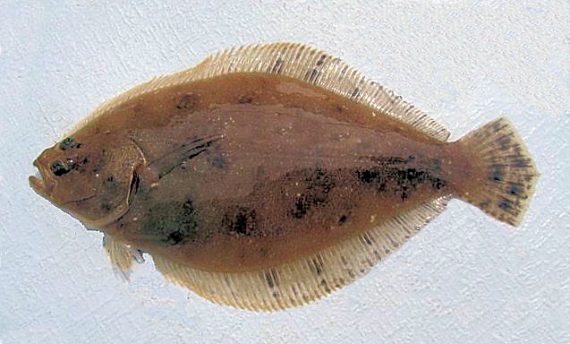Oval Flounder, Syacium ovale
 Oval Founder, Syacium ovale. Fish caught from coastal waters off Mazatlán, Sinaloa, March 2016. Length: 13 cm (5.1 inches). Catch, photograph and identification courtesy of Eli (obsessiveangling.wordpress.com).
Oval Founder, Syacium ovale. Fish caught from coastal waters off Mazatlán, Sinaloa, March 2016. Length: 13 cm (5.1 inches). Catch, photograph and identification courtesy of Eli (obsessiveangling.wordpress.com).
 Oval Flounder, Syacium ovale. Fish provided by the commercial fishermen of the greater Los Cabos area, Baja California Sur, July 2009. Length: 20.0 cm (7.9 inches).
Oval Flounder, Syacium ovale. Fish provided by the commercial fishermen of the greater Los Cabos area, Baja California Sur, July 2009. Length: 20.0 cm (7.9 inches).
 Oval Founder, Syacium ovale. Fish caught from coastal waters off Puerto Adolfo Lopez Mateos, Baja California Sur, April 2016. Length: 22 cm (8.7 inches). Identification courtesy of Dr. Benjamin Victor, Coralreeffish.com.
Oval Founder, Syacium ovale. Fish caught from coastal waters off Puerto Adolfo Lopez Mateos, Baja California Sur, April 2016. Length: 22 cm (8.7 inches). Identification courtesy of Dr. Benjamin Victor, Coralreeffish.com.
The Oval Flounder, Syacium ovale, is a member of the Sand Flounder or Paralichtyidae Family, and is known in Mexico as lenguado ovalado. Globally, there are eight members of the Syacium genus, and six are found in Mexican waters, three in the Atlantic and three in the Pacific Ocean.
The Oval Flounder is a flat fish with an oval-shaped body with a depth that is 41% to 45% of standard length. Their eye side varies in color from a uniform brown to a light tan with numerous dark spots that extend into their anal and dorsal fins. Their blind side is yellow-white. Their head has a convex upper profile and a medium-sized mouth that ends under the middle of their eyes and is equipped with 2 rows of teeth on their upper jaw. Their eyes are on the left side and set close together with the lower eye slightly in front of the upper eye. Their anal fin has 64 to 71 rays; their caudal fin has a wide base and is rounded; their dorsal fin has 83 to 91 dorsal rays; their eye side pectoral fin is 59 to 71% of head length. They have 7 to 9 fat serrated gill rakers on their lower arch. They are covered with large rough scales on their eye side and smooth scales on their blind side and their lateral line is straight and does not extend into the head.
The Oval Flounder is a demersal species that is found over and within sandy and muddy bottoms at depths between 7 m (25 feet) and 90 m (295 feet). They reach a maximum of 25.0 cm (9.8 inches) in length. They are opportunistic and well-camouflaged ambush predators that lie in wait half submerged on the ocean floor. They prey on small fish and a wide variety of crustaceans. The Oval Flounder is poorly studied with very limited information available about their lifestyle and behavioral patterns including specific details on age, growth, longevity, movement patterns, diet, habitat use, and reproduction.
The Oval Flounder is a resident of all Mexican waters of the Pacific Ocean with the exception that they are absent from just north of Magdalena Bay, Baja California Sur, northward along the central and northwest coasts of Baja.
The Beach Flounder can be confused with three Sanddabs and one Flounder found in Mexican waters of the Pacific: the Beach Flounder, Syacium latifrons (rounded head profile), the Five-Rayed Sanddab, Citharichthys mariajorisase (body depth >50% of standard length), the Gulf Sanddab, Citharichthys fragilis (body depth of 38% to 42% of standard length), the Pacific Sanddab, Citharichthys sordidus (12 to 16 gill rakers), and the Pompadour Flounder, Syacium longidorsale (first pectoral ray long).
From a conservation perspective the Oval Flounder is currently considered to be of Least Concern with stable, widely distributed populations. They are small in stature, relatively rare, and of limited interest to most. They are caught primarily as a by-catch of deep water shrimp trawlers.